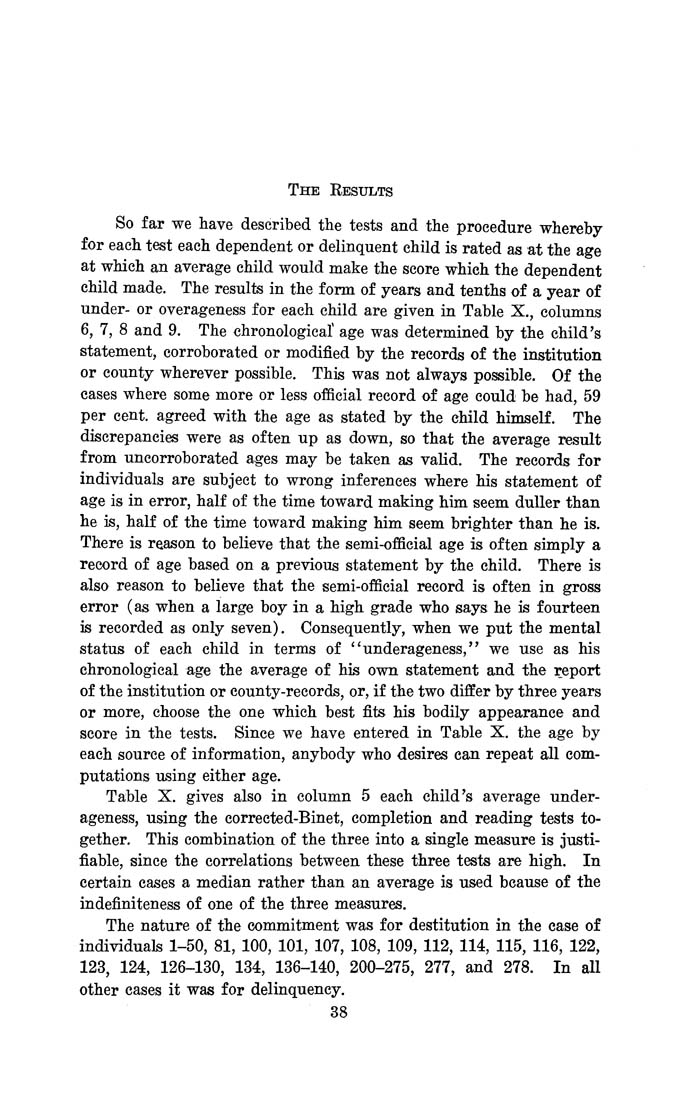The Results
So far we have described the tests and the procedure whereby
for each test each dependent or delinquent child is rated as at the age
at which an average child would make the score which the dependent
child made. The results in the form of years and tenths of a year of
under- or overageness for each child are given in Table X., columns
6, 7, 8 and 9. The chronologicar age was determined by the child's
statement, corroborated or modified by the records of the institution
or county wherever possible. This was not always possible. Of the
cases where some more or less official record of age could be had, 59
per cent, agreed with the age as stated by the child himself. The
discrepancies were as often up as down, so that the average result
from uncorroborated ages may be taken as valid. The records for
individuals are subject to wrong inferences where his statement of
age is in error, half of the time toward making him seem duller than
he is, half of the time toward making him seem brighter than he is.
There is reason to believe that the semi-official age is often simply a
record of age based on a previous statement by the child. There is
also reason to believe that the semi-official record is often in gross
error (as when a large boy in a high grade who says he is fourteen
is recorded as only seven). Consequently, when we put the mental
status of each child in terms of ''underageness," we use as his
chronological age the average of his own statement and the report
of the institution or county-records, or, if the two differ by three years
or more, choose the one which best fits his bodily appearance and
score in the tests. Since we have entered in Table X. the age by
each source of information, anybody who desires can repeat all com¬
putations using either age.
Table X. gives also in column 5 each child's average under-
ageness, using the corrected-Binet, completion and reading tests to¬
gether. This combination of the three into a single measure is justi¬
fiable, since the correlations between these three tests are high. In
certain cases a median rather than an average is used bcause of the
indefiniteness of one of the three measures.
The nature of the commitment was for destitution in the case of
individuals 1-50, 81, 100, 101, 107, 108, 109, 112, 114, 115, 116, 122,
123, 124, 126-130, 134, 136-140, 200-275, 277, and 278. In all
other cases it was for delinquency.
38
|








